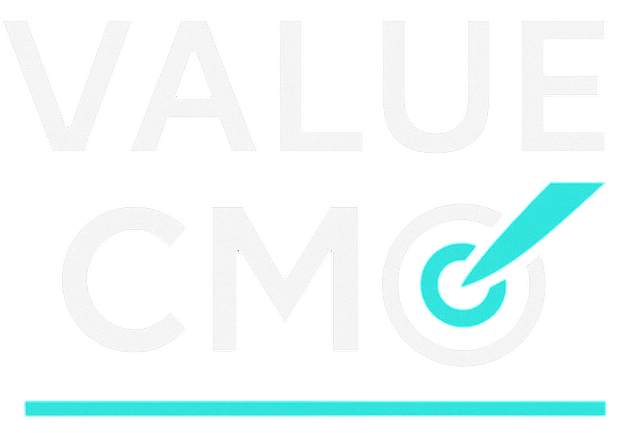Need bigger wins without growing the payroll? An outsourced marketing team plugs top-tier talent, tech, and know-how into your company for a fraction of what you’d spend on a full-time staff. Below is the full playbook – what the model looks like right now, why 2025 is its breakout year, and the six moves that keep results (and control) in your hands.
1. What Outsourced Marketing Looks Like Today
Outsourced marketing lets you hand some, or all of your planning, execution, and reporting to an external partner: a fractional CMO, a specialist “pod,” or a full-service agency focused on your goals. The best partners feel like part of your leadership team and peg compensation to revenue, not billable hours.
More than half of U.S. firms already farm out parts of digital, content, SEO, or social, so the model is anything but fringe.
2. Why 2025 Is the Sweet Spot
- Market surge. Outsourcing hit $302.6 billion in 2024 and is on pace for $525 billion by 2030.
- Talent crunch. Deloitte’s 2024 survey says skills and agility now rank next to cost savings as top reasons execs outsource. Half already lean on outside teams for sales and marketing (deloitte.com).
- AI firepower. Partners show up with AI-driven creative suites, predictive analytics, and real-time attribution tools that might cost you six figures to license alone.
3. The Hard Numbers
| Option | Annual Cost | What You’re Paying For |
|---|---|---|
| Full-time CMO + team | $450K–$900K | Salaries, benefits, bonuses, platform fees |
| Hybrid in-house + freelancers | $220K–$400K | Core staff, contractor mark-ups, overlapping tools |
| Outsourced partner | $60K–$240K | Fractional CMO, cross-functional squad, enterprise tech |
On average, companies that shift the work outside save about 25–30 percent (marketingcollaborators.com).
4. Eight Benefits You Can See on a Dashboard
- Speed. Launch campaigns in days, not weeks.
- A-list talent. Access fractional CMOs and channel experts you couldn’t justify full-time.
- Shared martech. Pricey platforms come baked in.
- Flex up or down. Scale spend without layoffs.
- Fresh eyes. Outside teams spot blind spots and cross-pollinate ideas.
- Scoreboard accountability. Outcome-based contracts are gaining ground (deloitte.com).
- Focus. Founders stick to product and customers instead of ad ops.
- Rolling innovation. Partners test the newest AI tricks so you don’t have to.
5. What You Can Hand Off
| Service Block | Typical Deliverables |
|---|---|
| Strategy | Fractional CMO oversight, positioning, annual plan |
| Demand gen | Paid search, paid social, ABM, email nurture |
| Content & SEO | Topic research, long-form pieces, on-page tweaks |
| Creative | Design, video, motion graphics, CRO assets |
| Analytics | Dashboards, attribution models, revenue insights |
Pick the blocks you need or outsource the lot — your call.
6. The Six-Step Playbook
- Audit the baseline. Lock in CAC, pipeline speed, and conversion rates.
- Set must-hit goals. Agree on revenue targets, channel mix, and launch dates.
- Short-list partners. Check their wins with companies like yours.
- Run a 90-day pilot. Start with one big lever.
- Share the data. Give direct access to your CRM and BI tools.
- Scale or switch. Double down on what moves revenue, drop what doesn’t.
7. Metrics That Matter
- Customer Acquisition Cost (CAC)
- Pipeline velocity
- Marketing-sourced revenue
- Return on ad spend (ROAS)
- Net revenue retention
Expect at least three of these to improve within two quarters – or tweak the plan.
8. Three Myths, Debunked
- “We’ll lose control.” Real-time dashboards and SLAs give you more control, not less.
- “Agencies are pricey.” The right partner replaces multiple salaries and tool fees.
- “Knowledge walks out the door.” Solid SOWs include process docs and regular IP transfers.
9. Quick Wins in the Wild
- Series B SaaS. Cut CAC 28 percent and tripled SQLs in six months after shifting demand gen outside.
- Industrial manufacturer. Moved 40 percent of trade-show spend to outsourced ABM, adding $8 million to pipeline in nine months.
- DTC health brand. Fractional CMO rebuilt analytics, switching from weekly PDFs to live dashboards and lifting ROAS 13 percent.
10. FAQ
How soon will we see ROI?
Most companies break even around month 4 and start turning a profit by month 6.
We already use freelancers — what happens to them?
Fold them under one accountable lead to cut the back-and-forth and keep everyone on the same page.
Can a small startup afford this?
Yes. Entry packages often run $5K–$7K a month — less than one mid-level salary.
Bottom Line
Outsourced marketing isn’t a quick patch — it’s a strategic lever that frees your core team, speeds execution, and ties spend directly to revenue. Follow the steps above and you’ll see why fast-moving CEOs are betting on external specialists to win 2025.

